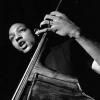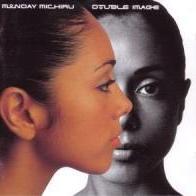
Big Beat Steve
Members-
Posts
7,029 -
Joined
-
Last visited
Big Beat Steve's Achievements
Experienced (11/14)
-
Rare
-
Rare
-
Rare
-
Rare
-
Rare
Recent Badges
-
The reason I was asking was that the publishing details on amazon.de indicate "Excelsior Editions" as the publisher, and that's all. Same as for the "Jazz With A Beat" book of 2024 (which clearly was a "print-on-demand" printing according to the "small print" on the final page). So this had me wondering about the distribution of this book. I see on amazon.com (USA) now that "Excelsior Editions/State University of New York Press" is indicated on that site. Not that I find anything wrong with the print-on-demand process (at least for virtually all of the books I so far have received that way) but this maes me wonder if maybe they are not shipping actual paper copies to be stocked at Amazon warehouses around the globe to fulfill worldwide orders far from the USA but have a file at some printing certer (or several such centers) on other continents and print according to orders received and ship from there. Well, we'll see once it arrives ... My order is now indicated for delivery here on 12 January (next Monday), i.e. the originally indicated delivery date. OTOH it has not yet been marked "shipped".
-
A question just out of curiosity to those who already received their copies: Supposing the copies you ordered and received are paperbacks, are your books actual publications (and printings) by a publisher and his in-house (or subcontracted) printer (as it used to be the case with books for almost as long as books exist) or are they book copies produced as "print on demand" items (as it increasingly has become the case in recent years, particularly with books on niche subjects). My copy of Tad Richards' "Jazz with a Beat" (Excelsior Editions too) received in 2024 has a small printer's imprint on the final page that says "Milton Keynes UK Ingram Content Group UK Limited" (as did certain other books I ordered via Amazon at about the same time), and my copy of "Listening to Prestige Vol. 1, 1949-1953" (originally published in 2015) received last December has the following imprint on the last page: "Printed in Poland by Amazon Fulfillment, Warsaw". So both clearly "print-on-demand" jobs. Both books look and are perfectly OK as paperbacks, but since different printing centers are probably used depending on where the book is ordered and shipped to, this might perhaps explain the differences in respecting the publication deadlines indicated up front.
-
The art of collecting vinyl: please just let us do
Big Beat Steve replied to Pim's topic in Miscellaneous Music
I see your point and you are totally right about the vinyl hype negatively affecting the "going price" of newly pressed vinyl. Yet I wonder if that music would have been pressed at all if there had not been this hype. The silliest thing about this hype, however, IMO is the prices charged for newfangled "collectible" series that contain music that has been round the reissue block a zillion times before, including on vinyl. (Need I say "Blue Note" or would this be heresy? ) However (and please beasr with me if i am a bit outspoken in what follows ), as for this statement of yours, "And that this resurgence is clearly distorting reissues with bonus material suppressed that should be available on any CD reissues", first of all I cannot see there is any obligation to include "bonus material" on any CD reissues. (Besides, isn't there a clear distinction between "previously unreleased or previously orphaned extra tracks" from the session(s) that the core reissue is all about on the one hand and oft-touted "bonus tracks" that actually are a more or less vaguely related number of tracks (often an incomplete (!!) second LP) to somewhat augment the playing time of the CD reissue? This latter kind of bonus material can be an asset but sometimes is downright expendable IMO and is likely to be a buying decision only to relative newbies. And secondly, since you are displeased with vinyl reissues that are limited to the contents of the orignal LPS (which is understandable, given the usual practices of many other labels on the reissue market at large), were/are you just as dissatisfied (and vocal in your discontent) with those CD reissues (from Japan, in particular) that also stuck to the exact LP contents (as outlined in my post yesterday in this topic)? So could these complaints about not giving the buyer extra tracks be related to VINYL in the first place at all? -
Sleuthing indeed. Hats off! It is this sort of "grassroots" research of what seems to be minor details at first (superficial) sight that actually fleshes out ANY page of history!
-
The art of collecting vinyl: please just let us do
Big Beat Steve replied to Pim's topic in Miscellaneous Music
Not so sure ... and not because I'd be against peace, unity and love: I realize the "what vinyl are you spinning" thread was started here when vinyl was not yet subject to a resurgence of interest and an ultimate hype in some areas and therefore stressed the particular nature of music on vinyl - as oposed to the then more current formats and media. (Or so I have always understood it ...) And even as it is used today, posting there just might (rightfully) place the accent on the fact that it its precisely music on VINYL that people are spinning. And bypassing those occasional posts that (to me anyway) look just a bit like "showing off" ( along the underhanded lines of "look what supreme pressing I have!" ) , it will certainly be of interest to some (SOME! Others, please disregard! ;)) what someone listens to on vinyl and WHY it is vinyl or any particular release/pressing on vinyl that does it for him, etc. Whereas the generic "What are you listening to" thread places the accent elsewhere and not on one specific format and this can and will lead to different slants in the discussions or feedback. Besides, at any rate I'd guess anyone is free to post even what he listens to on vinyl in the "What are you listening to" thread (which does NOT exclude vinyl, does it? ). But forcing everything together in ONE single thread would make this too much of a hodgepodge IMHO. Nothing to really be gained from that. So this is a classic case of pros and cons that cannot please everyone. Besides, what is begining to baffle me a bit here is that there really seem to be some who feel vinyl fans are way too touchy if they ask not to see their preferred format dismissed too harshly - and then these "non-vinyl" people in turn seem to find nothing wrong with being touchy enough themselves to make a point of publicly announcing they are going to avoid the vinyl forum or vinyl discussions. Is that really necessary? And is it necessary to dig confrontational trenches just because of such petty matters? I hope it all boils down to just some misunderstanding once the dust has settled and everyone has slept it over. And please remember, those of you who feel you are not leaning towards the vinyl camp, for every release or reissue that is "vinyl only" (which seems to be a bone of contention and starting point for quite a few critical remarks about vinyls as such) there are and have been dozens (no, hundreds!) of CD-only releases and reissues over time, and nowadays an increasing number of "download or streaming only" releases as well. So everyone always loses out somewhere unless he equally adopts ALL formats in his listening and/or collecting hobby. But "I've dumped my turntable XX years ago and resent being forced into a situation where I would be forced to obtain one again because I want to listen to that music" should really not be a criterion, should it? ... -
The art of collecting vinyl: please just let us do
Big Beat Steve replied to Pim's topic in Miscellaneous Music
I've heard from my son (who is a lot into Heavy Metal) that newcomer bands in that music niche even in recent years have promoted their first recordings via CASSETTES at gigs and that there even has been a sort of small resurgence of this medium in these circles. Surprising - and certainly caused by a bit of "old school" or "retro" motivation too. Because, after all, doing CD-Rs of your music is an easy thing to do these days. (HOWEVER ... from what I heard from various sides in very recent years Heavy Metal seems to be another music style where vinyl is "in" and CDs are "out".) -
The art of collecting vinyl: please just let us do
Big Beat Steve replied to Pim's topic in Miscellaneous Music
On occasion I did and do spend more than 25 EUR on a secondhand record in recent years. Including quite a bit more (though still well within the 2-digit realm) if it was never-reissued originals I had had my eyes on ever since I started collecting. OTOH, as for condition and the icing on the cake or bargain trophies that Clifford Thornton appropriately referred to, I am not going to list all the originals I scored at 1 to 2 EUR each in recent months and did not hesitate grabbing even though condition often was just a "solid VG" and not better (they do play through, often surprisingly quietly, and even on more "worn" copies background ticks or crackle NEVER overwhelm the music anywhere), nor make excuses for buying them in the first place. Not even for the occasional "cheesecake cover" originals just for the amusement of the covers at that price. (Talk about collectors' quirks ... ) -
The art of collecting vinyl: please just let us do
Big Beat Steve replied to Pim's topic in Miscellaneous Music
I get what you mean about those extra tracks. And you've got a point there. BUT ... did those who complain about these missing extra tracks on LP reissues also complain just as loudly - or possibly louder, given the frequency of the problem - even back when there were (and probably - in intervals - still are) tons and tons of JAPANESE CD facsimile reissues of 50s jazz LPs that included exactly the original tracks and that was all, resulting in dismal playing times? (Savoy Jazz/Nippon-Columbia CDs or Solid Records/VMG Salsoul/Verse Music CDs for example, anyone? ) I have a vague recollection that when this point was raised the usual reply was something like "the Japanese are sticklers for originiality of the contents, track sequence, cover art reproduction and so on, except that it's on CD because that is the state of the manufacturing art - THEIR art - so we just have to live with it, and besides, "thou shalt not criticize Japanese reissuers because they are a boon to us who want to get reissues at all." In short, I am not even accusing anyone of double standards, but it's just so that you cannot please everyone all of the time, it seems. Because no doubt some also may prefer facsimile VINYL reissues - like Fresh Sounds a.o. already did them in the 80s. -
The art of collecting vinyl: please just let us do
Big Beat Steve replied to Pim's topic in Miscellaneous Music
Actually, what I was referring to are REISSUES on small to tiny labels geared towards collectors. All of them taking advantage of European P.D. laws. So not quite comparable with the examples you (certainly correctly) desribe. And prices of 18 EUR on up per LP (as seen the other day) for most of them just isn't a level that I am going to bite at anymore. Particularly since you are likely to find that a good part of what you get on these records you already have on other collector's labels (re)issued earlier. -
Looks like in a way this predates the below use of such shelves.
-
The art of collecting vinyl: please just let us do
Big Beat Steve replied to Pim's topic in Miscellaneous Music
Funny ... this feeling you describe sounds strangely familiar. Although I tend to shrug that off too - collecting is not an all-out rational thing so inevitably not everyone who is into the "core" of it (i.e. music of a certain style) will approach it the same way beyond that "core" of a common interest. In the case of our music this might, for example, be those who feel more comfortable storing and indexing their music on a hard drive and accessing it there on demand and don't necessarily attach maximum importance to liner notes, recording dates and the like. Just like some (like me, as you may have guessed) enjoy reading about the music in many ways whereas others can't be bothered even one second with printed matter relating to the music they listen to (noticed every now and then out there ...). It's a bit like in my other collecting interest - collectible cars. I'm one of those who also enjoys rounding up all the documentation, both historical and technical, to go with my cars and burying myself into them to LEARN about the cars, their maintenance and their history. Whereas others "just want to drive" (the same kind of cars). Which is all very well, but at other moments they are not above asking the most clueless questions to "those in the know" because one day they do need some info after all but never bothered to learn even the basics about their cars themselves. -
The art of collecting vinyl: please just let us do
Big Beat Steve replied to Pim's topic in Miscellaneous Music
I agree with you all the way with the price excesses of recently re-reissued NEW vinyl. At the price I see them in the racks at the few local record shops that still are there as well as at a record stall at a local concert they leave me cold and I find it easy to bypass them. And this not only applies to the unpteenth Blue Note remasters. Here and there I have shelled out a bit more than "usual" for new Sonorama vinyl, but at least they offer "new old" collectible music that has not been around before. BTW, IMO Felser's suggestion about how to post (i.e. adding "vinyl only" in the title) sounds reasonable to me. Although, honestly, I do not find there is much need to make much of a fuss about missing out on a format. Here and there I've come across reissues of music that would have filled a gap in my collection too but on closer inspection it said "download mp3 only". Heave a sigh, shrug your shoulders, remember the total of records (analog and digital) you already have anyway, and just move on ... -
The art of collecting vinyl: please just let us do
Big Beat Steve replied to Pim's topic in Miscellaneous Music
@mjazzg: Understandable, but it would be a pity you'd let yourself be shied away for petty reasons such as these. So please reconsider. There are many reasons why one can doubt the practices of certain vinyl reissuers but this "bonus track" obsession of some is not really all that reasonable either. Being a competist is all very well but that's a different discussion again - and besides, you completists, how much of what you value about those extra/bonus tracks really is desert island material at all? I've sometimes been guilty myself of keeping a CD just because of the extra track(s), even though I owned the vinyl too. But this would never have been the make-or-break decision for one or the other format. To some degree I have had the same experience. Over here pre-Hard Bop jazz vinyls have come down in price as well. I.e. bebop and cool jazz too. (Which suits me fine and has been part of the reasons why I have had to do the in-house move described in my post above ) Although I have yet to see a major drop in price of 80s Blue Note reissues (and Liberty pressings still are often priced way too high IMO for what they are compared to the earlier pressings - but that's one of the Blue Note peculiarities, I guess). -
The art of collecting vinyl: please just let us do
Big Beat Steve replied to Pim's topic in Miscellaneous Music
Thanks, Pim, for starting this topic! You more or less sum up my feelings about buying and collecting vinyl. Now ... in random order about some points made by others and you here: "Vinyl hating "posts: To those doubting Thomases - they have been made here in varous contexts. Maybe sometimes better refered to as "vinyl dismissing" posts ... As I remember them, the bottom line often was: "You are not in the swing of things anymore if you still stick to vinyl - they only have drawbacks and are outmoded", etc. (Something that came up again when CD buyers got blasted in turn for not having made the transition to downloading and streaming. "Vinyl hype" geeks of course are a different story. I remember cases like these too, like one that the owner of a local record store told me some 20 years ago when I paid for a Blue Note Japan reissue at the counter: "The other day a guy who had had the finishing touches put to the renovation of his designer-furnished apartment dropped in to ask me to compile him a set of Blue Note vinyls for his living room and audio equipment." Certainly not one of the (bearded) lumberjack shirt hipsters (I know that sort of characters too - they also infest other subculture and niche collecting scenes) but rather one of the black turtleneck sweater-wearing art-as-lifestyle geeks, but still ... But certainly - and that's the point here - hardly anyone professing to his love for vinyl here on this forum can be accused to be of the hipster or hype follower types, but rather just someone who has stuck to the medium he has come up with. Like I for example have ... although I have come to appreciate CDs over time too and have bought lots of them (though my vinyl to CD ratio in my collection still is about 4.5 to 1 ). Sometimes for convenience, often because the music I at long least wanted to obtain in tangible form and that had been unavailable or too pricey on originals was only ever reissued in an accessible form on CD. And there is indeed the matter of feeling and of vinyl as an object designed as an entity, at least as it was at the time of its original release and as it has become accessible again through FACSIMILE reissues (and no, the Japanese "mini-LP" CD reissue miniatures just are not the real thing - not by a long shot!). But - as with you - hunting for vinyls (in shops and elsewhere) still is different from rummaging through the CD racks in the record shops. CDs are for practicality, LPs are often a matter of "ha, this is the one that I had been unable to afford when it was first reissued or had missed out on at this or that occasion before". It is a surreal feeling when you locally (!) come across a secondhand copy of a rare reissue by an extreme niche artist in your musical field of interest that you remember having missed out on (for lack of funds) way back in 1978 or so at a local record shop. There cannot have been many copies sold back then in our town or local punters crazy or savvy enough to have bought them, so this may well have been the exact copy you had hesitated about too long back then ... This is only ONE of many, many unreasonable motivations of collecting vinyl (and certainly not the major one, but moments like this stick in your mind). Yet these and other collecting aspects and collector's traits just do not (and do not have to) conform to any rational criteria (as you rightly say). As with any other collecting hobby. The examples or other areas of collecting you name for comparison are just some of the "classic" ones and far from the oddest ones. Compared to what certain others collect the vinyl nerds look comparatively sane anyway, don't they? Actually only yesterday I had a talk with a lady (who had a stall at a vintage fleamarket I also attended ) who mentioned to me that she has 800 pairs of (mostly) vintage shoes at home. Now who's crazier within the collecting fraternity (sorority too ) - those who hang on to vinyl or those who amass such amounts of footwear? Sometimes I have a hunch that some of those who dismiss buying and collecting vinyl are of the "sour grapes" faction because they realize they'd have to put their vinyl in storage (and pay for it each month ) and somehow envy those who do have the shelf space to display and enjoy their collection at home. Sometimes you have to make an effort indeed ... I've spent the past 2-3 months clearing out stuff at home myself to free shelf space for my new acquisitions of vinyls (and CDs too) as well as jazz books following larger hauls from an estate sale and from a clearance sale at a local record shop (where for some unfathomable reason a considerable part of a highly interesting collection - interesting at least to my tastes - they had recently gotten in ended straight in the "1 EUR each" bins). Which meant that many more documents from what used to be my office room in my house had to go to make way for a large part of my collectible car books and mags that had to move downstairs into this office where I am typing this post now - because the space they used to occupy for years in the room next to my music room was now required to house my newly bought vinyls. (In the course of which some of those car books and mags went into my fleamarket crates, and actually I sold off a few yesterday at a local vintage fleamarket). Luxury problems? Yes - but isn't this what any "special interest" way of passing your time is all about? In short, collectors are a strange breed, and to those who wonder what it's all about with collecting vinyl - here's something for your looking and reading pleasure (or puzzlement, as the case may be): https://www.amazon.com/-/de/dp/160774869X/ref=sr_1_1?__mk_de_DE=ÅMÅŽÕÑ&crid=24BJEESUCFBOR&dib=eyJ2IjoiMSJ9.KKG2ekcERAjfh5KPxnb9uIk9aUaENuifo3_1oZPwuW9dpsNgTdUvbht5c6lGQP0SxjX4lAt0yKIzpevPgNpRTW09CvHLjakL2wq_wdA2r9ogSC0Gw7ghOofIJi3cMS9YyiKzykBGb5opB-ZZ8OwzEw._GO_PIVTgukfKF35WENUsaYtGGj7TkMparKZQBhLkuI&dib_tag=se&keywords=Dust+and+Grooves&qid=1767531149&sprefix=dust+and+grooves%2Caps%2C195&sr=8-1&language=en_US
_forumlogo.png.a607ef20a6e0c299ab2aa6443aa1f32e.png)





